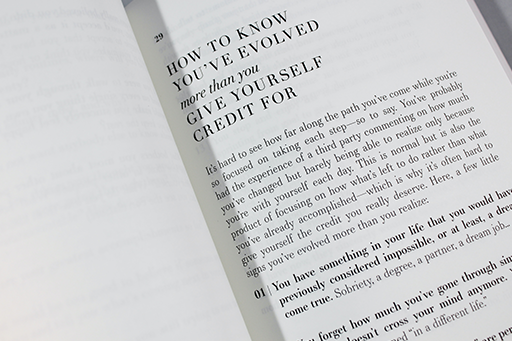You have done everything you could have possibly done, but your website still doesn’t rank higher on the search index? Well, what if I told you that you are missing a key piece of the puzzle that is a must for ranking better organically?
If you are slightly nodding your head while anticipating a big reveal that might even put industry experts to shame then don’t, as this growth tactic is common knowledge to everyone who made it big on the web.
S E O
Sounds familiar, of course, it does that’s the one word nobody ever stops talking about in the digital marketing niche. But you might be thinking, “hey I have already done SEO, what is this guy talking about?” Then you must realize something, SEO is an extremely complex system of digital marketing, what you might have done is a simple SEO, but to rank higher you need On-Page SEO!
Here is how you do it
Five Elements Of On-Page SEO That You Must Focus On
SEO is all about the little tweaks you make to your website, which has many potential target areas for improving your search index ranking. But for the sake of the article, we will focus on the on-page aspects of website SEO that you should tweak:
Element 1 – Titles
Tiles play a crucial role in both the organic and inorganic recognition of your website’s web-page, as it is something both the human user and the algorithm will use as a reference. Therefore a title must not only make sense from an SEO stand-point but also be readable by the human eye.
An example of a title for a page would be:
Good titles will increase your CTRs or click through rats as well as search rankings. Here are two tips that will help both you to write SEO friendly titles: 
- To make it easier for the user to digest your content keep your titles within a limit of 70 characters.
- Make sure to add your primary keyword in the title that you are using for the corresponding page.
Element 2 – Meta-Descriptions
Meta-Descriptions or more commonly known as just descriptions are an important aspect of your webpage’s MetaDATA. Meta-Descriptions not only help users decide whether a website is worth visiting, but it also aids indexing web-crawlers to index relevant SEO keywords on a webpage. Here is a good example of a Meta-Description:
The two things you must do to write Meta-Descriptions:
- Make sure to be on point and deliver your content within a limit of 120 to 150 characters.
- Do not stuff your Meta-Description with secondary or tertiary keywords; the primary one would work just fine.
PRO TIP – Reach out to 42Works today to get a FREE on-page SEO audit report for your website.
Element 3 – Content
The content of your web-page is by far the most important aspect of your SEO strategy that needs critical attention. The content you put up on your web-page is directly responsible for the organic engagement you drive from users on your website. Therefore you should pay close attention to the keyword distribution and placement in the content of a web-page.

One fundamental thing to understand about using keywords in your web-page content is that they need to make sense. As a result, your first target should be the delivery of the content to human users and not how it will be indexed by search web-crawlers.
Another essential thing to note: make sure your content doesn’t betray the page themes laid out by the Meta-Description and page Title. If you indulge in click-baiting your users you won’t increase your organic traffic, rather you will end up with an inflated bounce rate.
Element 4 – Peripherals

As illustrated in the above point, content plays an extremely important role in successful on-page SEO, therefore let us break down content optimization a little further. The following are content areas that need optimization:
- Image Alt-Text – Image alt-text acts as SEO for the images that you use within your content. Alt-texts tell search engines what your image is all about and helps you rank higher on image search.
- Heading Tags – These tags also serve a dual purpose task as they help both the user and search engines distinguish important parts of your content. All your content must have <h1>,<h2>, and <h3> tags along integrated keywords for good SEO.
- Internal Linking – Link building is another critical aspect of creating a credible online presence through content. Using authoritative third-party links in your content enables you to incentivise others to also share your content and thus create a chained cycle of traffic movement.
Element 5 – Site Performance
Nobody likes a website that loads slow, you can create the best content in your niche and still be left out because of how slow your website is. Having a website that has good performance is an absolute must for ensuring an effortless and efficient user experience.

A good user experience incentivizes netizens to interact with your website more thus increasing your engagement rate. If you want to check how well your website’s page performance is, then you can use Google’s free PageSpeed Insights tool.
Things You Shouldn’t Do For Good On-page SEO
Now that you are aware of the things you should do for good on-page SEO, you must also understand the things you shouldn’t. You see, optimizing a website is a complex task that involves many different variables even if one goes wrong, the whole equation stops making sense. Therefore the following two mistakes should be avoided by you at all costs:
Don’t Conceal Your Keywords
The first mistake an online marketing company or an individual marketer must never make is trying to outsmart the search algorithms by hiding keywords. Yes, it might have worked back in the early days of the World Wide Web when web-crawlers weren’t the most sophisticated and couldn’t read CSS scripts, but the case today is no longer that. If a search engine algorithm finds your website tampering with keywords, you might get penalized or even shadowbanned.

Don’t Stuff Your Keywords
Keyword stuffing is as bad of an SEO practice as one can get. Not only is it not good for search engine algorithms, it also screws up the user experience. Once you have conducted your keyword research, landing upon a primary and a few secondary keywords maintains a healthy balance of content and keywords. Here is a healthy metric to keep in mind:
- For an article/blog that contains 500 to 600 words, you should only have one keyword for the primary and secondary position each.
Unnecessarily stuffing your keyword into content headings, Meta-descriptions, URLs, etc. is just spamming plain and simple. If that wasn’t bad enough, newer updates made to search algorithms actively penalize web-pages that stuff their keywords.
Keep In Mind: Put The User First
While it is true that conducting on-page SEO can be a fairly technical task, that doesn’t mean it shouldn’t have a soul. Everybody from an individual marketer to a newbie needs to remember that your website is only as optimized as your User Experience.
You must understand that the goal of a website is not to shove content down the throats of users, rather it is to enhance and enrich their lives. What I am getting at is simple, your priority in your SEO strategy should be creating stellar content and then think about backlinks, URLs, ALT image tags, etc. Hence the best thing you can do for your website’s on-page SEO is putting the user’s needs first!
In Conclusion
On-page SEO is not a cakewalk. It requires a lot of work and patience to actually see results. If all this seems overwhelming, you can outsource it to a result-oriented online marketing agency. As you focus on the larger goals of your business, we’ll ensure your SEO is in place for top SERPs.
But if all of this seems too much of a headache to you then don’t sweat it, outsource your worries to an online marketing company that will handle all the hassle. Meanwhile you will be freed to pursue the larger goals of your business.


